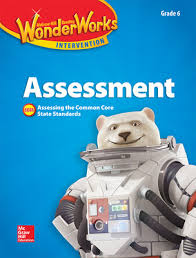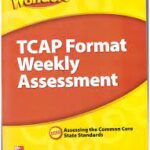McGraw Hill Fluency Assessment Grade 6. Fluency is critical because it directly impacts the comprehension process. Free eBook/Flipbook and PDF
McGraw Hill Fluency Assessment Grade 6
What Is Fluency?
Fluency is the critical bridge between two key elements of reading—decoding and comprehension. In its 2000 report, the National Reading Panel defined it as “the ability to read text quickly, accurately, and with proper expression.” Fluency has several dimensions. Successful readers must decode words accurately. But they must move beyond decoding and recognize words in connected text quickly and automatically. They must also read with expression in order to bring meaningful interpretation to the text. All three dimensions— accurate decoding, automaticity, and ability to read expressively—work together to create effective comprehension and overall success in reading. In its 1994 study of reading, the National Assessment of Educational Progress (NAEP) established a clear connection between fluency and comprehension. NAEP defined fluency as the ease or “naturalness” of reading. It recognized certain key elements as contributing to fluency. These included the reader’s grouping or phrasing of words as shown through intonation, stress, and pauses and the reader’s adherence to the author’s syntax. They also included expressiveness as reflected by the reader’s interjection of a sense of feeling, anticipation, or characterization in oral reading. These elements are called prosody. When readers use appropriate volume, tone, emphasis, and phrasing, they give evidence of comprehension. They demonstrate that they are actively constructing meaning from the text.
Why Is Fluency Important?
Fluency is critical because it directly impacts the comprehension process. For years, teachers thought that if students could decode words accurately, they would become strong readers. Fluency, which has been referred to as a “neglected” aspect of reading, received little attention. Now it is recognized as one of the five critical components of reading. Researchers have pointed out that people can successfully focus on only one thing at a time. They can, however, do more than one thing at a time if one of those things is so well learned that it can be done automatically. In its simplest form, reading can be seen as (1) word identification or decoding and (2) comprehension, or the active construction of meaning. Effective readers cannot focus on both of these processes at the same time. If a reader is focused almost entirely on decoding, that reader will have few resources left over for constructing meaning. Only when readers can read the words in connected text automatically are they free to focus their attention on making inferences, drawing conclusions, and applying other critical thinking skills associated with constructing meaning.
WE DO NOT SUPPORT COPYRIGHT DISPUTES – USE ONLY FOR TEACHING AND LEARNING PURPOSES

McGraw Hill Fluency Assessment Grade 6.
All downloads are in PDF format
BROWSE THE EBOOK ONLINE OR DOWNLOAD THE PDF FOR FREE




